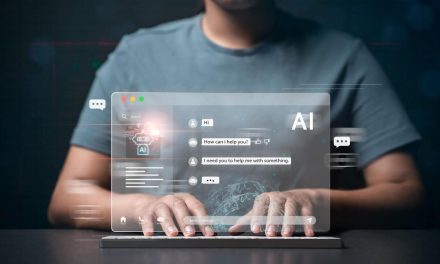Need to combat risk of exposure to identity theft and e-commerce fraud with the rise in cyber-attacks amid the pandemic.
The accelerated digital transformation amid the pandemic has resulted in rapid escalation in cyber-attacks and online fraud. In Asia Pacific, some 68% of businesses have indicated that they have been successfully breached in 2020, an increase from 32% in 2019.
As companies look to defend themselves against these cyber-attacks, we are seeing an increased demand for biometric technology across industries including banking, retail, and mobile commerce.
The impact of biometrics on cybersecurity and the future workplace can be immense.
CybersecAsia discussed these trends and developments with Tim Ferris, APAC President and Senior Vice President for Public Security and Identity (PSI), IDEMIA.

In what ways have cybersecurity risks risen in Asia Pacific during the COVID-19 pandemic?
Ferris: Cybersecurity risks in Asia Pacific have risen during the COVID-19 pandemic largely due to an increase in remote working among organizations and consumers taking to e-commerce in a big way.
The ongoing pandemic has pushed many organizations to adopt remote or hybrid work models to ensure business continuity while ensuring the safety of their employees. Although such work models may have certain pros, they have also resulted in a rise in cyber-attacks and fraud in the APAC region amid the ongoing pandemic.
In a remote or hybrid work model, employees, devices, and the IT team are not connected in a physical setup. This allows organizations less control over devices and networks, thus leaving systems vulnerable to internal and external data breaches by cyber attackers. In fact, one fifth of organizations across Asia Pacific were hit by at least seven cyber-attacks in the past 12 months.
The COVID-19 pandemic has also caused an increase in e-commerce in Asia Pacific. The region’s e-commerce sales are expected to nearly double by 2025 reaching US$2 trillion, according to a recent study. This has raised cybersecurity risks among businesses as cyber-attackers target e-commerce sites to obtain customers’ personal and financial information in order to steal identities or make unauthorized transactions with their payment information. A global report on consumer attitude towards digital privacy found that 40% of consumers in Asia Pacific have reported breaches of their personal data in the past year.
The epidemic has reaffirmed the need to develop a state-issued digital identity to ensure the continuity of public services at a distance by guaranteeing the authentication of citizens in a totally secure and fluid way. Biometrics plays a key role in accessing these services thanks to technologies for liveness detection and matching biometric data in the ID card chip with face or fingerprint recognition.
What role is biometrics playing in mitigating cybersecurity risks such as identity theft and fraud?
Ferris: To combat the risk of exposure of sensitive business information or personal identifiable information (PII), enterprises must ensure that all data is secure and protected from data leaks.
Identity verification through biometrics can help to verify the identity of employees accessing this data, regardless of where they are located. Biometric authentication can help organizations better secure their data by protecting the points of entry to their network and ensure that only the right people have access to sensitive information.
Biometrics guarantee the uniqueness of a person’s identity and thus ensure that the identity can be trusted.
Unlike traditional methods of authentication such as passwords and PINS, biometric authentication relies on the user’s unique identifiers, such as fingerprint, face, iris and voice, which are difficult to steal, and much harder to replicate.
Biometric solutions such as IDEMIA Identity Proofing Platform enables enterprises and service providers to verify, manage and authenticate digital identities in a secure, trusted and convenient manner. This process is completed using real-time biometrics and ID document capture via a user’s own smartphone. Once users submit their data, their biometrics and ID information are then extracted, authenticated and verified using IDEMIA’s artificial intelligence algorithms.
What are some current trends in the adoption and use of biometrics in Asia Pacific? Which industry sectors in particular do you see exciting developments in biometric security adoption?
Ferris: The COVID-19 pandemic has accelerated the shift to touch-free transactions in Asia Pacific, and the rest of the world. A recent global survey revealed that an overwhelming 76% of Singaporeans and 67% of Australians feel that cashless is now their preferred way to pay.
IDEMIA is pioneering the future of payments with our biometric payment solutions. We introduced the world’s first biometric payment card F.CODE, which allows customers to authorize payments via a fingerprint sensor. With F.CODE, transactions are authenticated in the same instant as the card is being tapped, enabling convenient and more hygienic payment.
We recently partnered with MatchMove to launch F.CODE Easy in Asia. The solution ensures privacy and security by storing all biometric credentials on the card chip rather than a central database, providing end-to-end security for financial institutions in the region.
Mobile service providers are also turning to biometric technology for quick and secure registration of their customers. Merchantrade, Malaysia’s leading Money Services Business Operator and e-money player, recently enhanced the secure onboarding of customers for two of its mobile-enabled services using IDEMIA’s Identity Proofing Platform.
In Asia Pacific, many governments have moved to develop digital IDs that are central to digital service delivery in the future. A new report from Juniper Research says that ‘government issued digital identity credentials’ will grow by over 150% in the next five years, with the largest growth expected to come from Asia Pacific and Africa.
As governments are the legal and legitimate guardians of citizens’ biometric data, they can leverage them to issue a digital ID, bringing the highest level of confidence. Checking one type of biometrics is efficient, checking several biometrics is foolproof. Depending on a country’s needs, fingerprints and/or face can be used as authentication factors.
Multibiometrics is one of the keys to combat identity fraud. IDEMIA has developed advanced technologies to perform liveness checks and was certified with the ultimate level of security NIST iBeta Present Attack Detection Level 2.
The Indian national ID project Aadhaar is to date the world’s largest identity program. The project enables service providers in India to verify a person’s identity by simply submitting the applicant’s issued Aadhaar number, along with biometric data (such as fingerprints), to instantly confirm the person’s identity.
What about the security of the biometric data itself?
Ferris: Biometric data is arguably one of the most sensitive types of data that one can get hold of. While biometrics has mitigated cybersecurity risks to a large extent, there’s also an increasing need to protect biometric data through advanced cybersecurity measures.
2021 will be all about developing ways to protect biometric data – in the cloud or wherever it might be stored, processed or shared.
Three key ways – including secure multi-party computation, verifiable computing and homomorphic encryption – will help secure data and allow stakeholders to benefit from convenient services and security at the same time, while ensuring confidence during data sharing.
How is biometric technology impacting the future workplace?
Ferris: As countries start to recover from the pandemic and cautiously open offices and spaces, reducing contact points at entry becomes a priority for many organizations. Biometric technology offers an effective solution to these issues and can be combined with other tools and technologies to enhance overall building and space security.
Biometric facial recognition technology such as VisionPass can provide highly accurate information at entry access points in less than one second, which is superior to traditional entry methods. It also features more advanced metrics for identification while allowing for better hygiene practices, and increases convenience and efficiency by being able to scan more people in less time with its near-motion 1-second verification.
These benefits have the potential to transform workplaces into safe and healthy areas that will positively impact worker output and productivity.
Our MorphoWave™ access control device is another good example of how biometric technology has the potential to transform the workplace. MorphoWave™ is a unique solution for frictionless fingerprint access control. Its main feature is its patented contactless 3D fingerprint authentication, which achieves high authentication accuracy by scanning the fingerprints of four fingers in three dimensions.
Net One Partners Co., a Japan-based information technology company that provides ICT solutions, recently launched MorphoWave™ in Japan for entrance/exit management in the lobby and floor of office buildings and important facilities such as factories, power plants, airports, and data centers.

















